Good oral hygiene is important for everyone, and electric toothbrushes promise to make the process of caring for those pearly whites a whole lot easier, with built-in timers, apps and multiple brushing modes that not just do a better job than a manual toothbrush, but teach you to take better care of your teeth.
To find the best electric toothbrushes, we brought in 10 electric toothbrushes and brushed our teeth — a lot — while testing every feature and consulting with dental professionals to determine which features were really helpful. Our teeth felt nice and clean at the end of the three-week testing period, and in the process we found four great models that will get your oral health dialed in.
The slim, compact Philips One by Sonicare comes with a form-fitting case and has 30 days of battery life, making it the perfect electric toothbrush for travel. It doesn't have all the features of some more expensive brushes, but offers more than enough to keep up your tooth care routine on the road.
Best electric toothbrush overall: Philips Sonicare 4100
$49.99 at Amazon
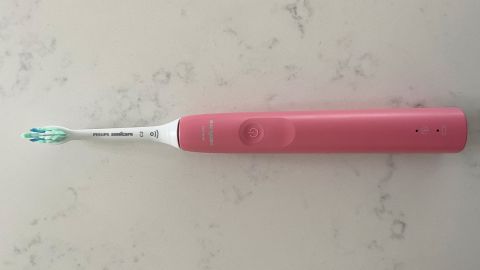
Looking for an excellent electric toothbrush at an affordable price? If so, the Philips Sonicare 4100 is one of the best out there. The 4100 has been around for many years, and we found it as comfortable, easy to use, and effective to use as more expensive models, with simple, useful features like a pressure sensor and timer that make a big difference versus traditional manual toothbrushes.
Although the Philips Sonicare 4100 isn’t as feature-packed as some toothbrushes that cost a few hundred dollars, those extra features aren’t always needed. The Phillips offers only a single brushing mode, with low and high intensity levels. The straightforward controls let you easily change the settings as you brush. During testing, the Sonicare 4100 felt very comfortable in hand, and the brush head (several varieties are available from Philips; we tested with the supplied standard heads) was gentle against our teeth and gums, getting into those hard-to-reach places and getting our teeth sparkling clean.
A two-minute timer reminds you to brush for the full two minutes per most dentists recommendation, and even better during that time a “Quadpacer” timer vibrates every 30 seconds, guiding you to move to another quadrant of your mouth — helping to make sure all teeth are cleaned equally. You can also pause the toothbrush — for up to 30 seconds — and the timer will start off right where it left off.
One of our favorite features of the toothbrush — and one we didn’t find with some of the other lower-priced toothbrush options — is the pressure sensor. While using an electric toothbrush, you’re meant to let the brush head do the work rather than scrubbing. So during the brushing session, if you press too hard and apply too much pressure, the Sonicare 4100 will vibrate and an indicator light will flash, giving you a warning. Dr. Mark Wolff, professor of restorative dentistry at the University of Pennsylvania, emphasized the importance of controlling the pressure while brushing since “brushing too aggressively can wear the gums and tooth structure, resulting in recession and tooth sensitivity to cold.”
Everything on the Philips is well thought out from a design perspective. On the backside of the toothbrush, a notch to keep the toothbrush from rolling around, ensuring the brush head is always kept off the surface if laying flat. And just like most Philips products, a plastic case is included to keep the brush head clean during storage or travel.
For those new to electric toothbrushes, the Phillips 4100 has an ‘EasyStart’ feature turned on by default; this gently increases the power over the first 14 brushings. Since electric toothbrushes feel different than a manual toothbrush, this allows you — and your teeth — to adapt to the toothbrush over a weeks time.
Other features include a brush head replacement reminder, a low battery indicator, a 14 day battery life and a two year warranty. The 4100’s charging base uses a USB-A connector, although a wall adapter isn’t included so you’ll have to supply your own.
The Philips Sonicare 4100 is one of a pair of Philips electric toothbrushes (the other is the Sonicare 4700) that has received the American Dental Association (ADA) seal of acceptance, which means that it has been evaluated for efficacy and safety by a team of independent dental and scientific experts.
Best smart electric toothbrush: Oral-B iO Series 9
$329.99 $239.99 at Amazon
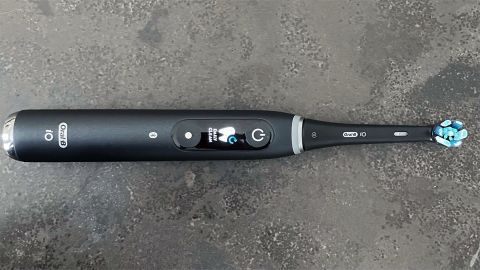
The Oral-B iO Series 9 is by far the best smart toothbrush we tested, with an app that offered consistently accurate and useful feedback. The brush itself — a sleek metal unit with a colorful LCD display — offers seven different modes, the most out of any toothbrush we tested, along with the full suite of standard features such as an easy-to-view pressure sensor indicator and two-minute timer (with 30 second pulsing quadrant reminders).
The seven modes include daily clean, intense clean, whitening, gum care, sensitive, super sensitive and tongue clean. Registered dental hygienist Nicole Barbour, who works for a practice in Newton, MA, told us that while most of the patients she sees only need a standard mode, a sensitive setting can be beneficial for those who are at higher risk for enamel wear, gingival attachment or tooth sensitivity. She also suggested that the gum care setting — when used with a compatible brush head — can help remove bacteria from the gum line. However, she did go on to say that there’s not enough independent data available as to whether or not all modes are in fact beneficial and exceed your regular standard mode. And for most patients, multiple mode options aren’t necessary.
But if you’re a patient that has a specific oral need, with many modes available, this toothbrush allows you to fully personalize your brushing experience. And while all brush heads are compatible for each mode type, you’ll receive the best experience by purchasing the Oral-B brush head specific for your selected mode.
The oscillating brush, which rotates side to side rather than vibrating like the other brushes we tested) is much quieter than the other Oral-B toothbrushes in our test group, and we found it moved smoothly from one tooth to another. Oral-B also claims the “round brush head pulsates to loosen plaque and then oscillates and rotates to sweep the plaque away.”
While it might seem like overkill for some, I appreciated the Oral-B’s smart features. With this feature, you can sync your toothbrush to the Oral-B app on your phone, which will guide you through your brushing session. When brushing, I found it very useful to be guided through each quadrant of my mouth and to see (via the 3D tracking feature) which surfaces and sections of my mouth weren’t brushed enough. With this app, you can either watch in real time, or review your brushing later.
On a busy morning, I find that I don’t always have the patience to truly focus on brushing my teeth properly, so this kept me in check and you might find similarly. Barbour told us that “most patients are in the habit of brushing in a way that may not be effective for plaque removal of all surfaces and using a smart app can benefit patients as they practice proper brushing technique and adaptation.” However, she did go on to say that “paying too much attention to the app can backfire if it distracts too much attention.”
The app also tracks your total brush time and the amount of pressure for every brushing session. Barbour told us that seeing this information can help a patient make changes to their brushing habits, as needed, and improve efficacy. Dr. Wolff agreed and mentioned that tracking your brushing sessions and showing the history to your hygienist will allow them to “give you some customized instructions to improve your homecare.”
Within the app, you are also given daily coaching tips, based on your brushing habits to help you with future sessions. Conveniently, you don’t have to keep your phone in front of you while you brush. So long as your phone is within bluetooth range it will record your session. You don’t get the live guidance, but you will get the data on brushing time and pressure. We also found the accuracy of the app to be top notch, which is not something we found with all of the other bluetooth-compatible toothbrushes we tested. Within the app, you can also set up a brush head reminder and various challenges to ensure you are receiving the best oral care possible.
it’s Although it costs significantly more than most of the brushes we tested, the packaging comes with four brush heads in total, a magnetic charger that takes just three hours for a full charge and a travel case. The travel case even comes with its own plug for easy charging on the go.
If you are looking for a toothbrush that will truly track your brushing habits — correctly — this is by far our favorite smart electric toothbrush we tested. Those who need some guidance while brushing or have specific oral health goals in mind will absolutely love this brush — it will truly track your brushing habits. But if you don’t believe you’ll use many of the capabilities or have the need for guided brushing and don’t want to have your phone with you at all times in the bathroom, then you probably don’t need to splurge on such an expensive toothbrush. You also might want to take into consideration the cost of replacement brush heads as they are significantly more expensive than most of the models we tested at close to $10 per brush head.
If you’re on the fence, you can try out the Oral-B iO Series 9 toothbrush for 60 days and if you aren’t happy, you can receive a full refund.
Best electric toothbrush for travel: Philips One by Sonicare
$39.95 at Amazon

The Philips One by Sonicare is slim and incredibly compact. It comes in a form-fitting case that fits the brush perfectly and barely takes up any space in your toiletry bag, making it a great travel companion. Plus it comes in seven colors, making it easy for each member of your family to identify their own toothbrush.
One of the best aspects of the toothbrush is that the rechargeable battery lasts up to 30 days, double or triple the battery life of most other electric toothbrushes we tested, allowing you to truly not worry about your toothbrush running out of battery while on the road. If you don’t want to have to worry about recharging the battery, you can instead opt for a battery-operated version of the Philips One toothbrush. The functionality of the toothbrush is exactly the same, although it runs on a single AAA battery, which lasts for approximately 90 days.
No charging base is included with the rechargeable version; rather the toothbrush is also charged by a USB-C cable, so you can use the same charger you’d use with many phones, computers and other electronic devices. So although a USB-C charger comes with the Philips One toothbrush, if you happen to leave it at home, there’s a good chance you’re able to find another one in your bag (or perhaps get a loaner from the hotel’s front desk). A four-stage battery indicator lets you know how much life is left, and if you’re caught out a full charge takes around 8 hours.
Although the brush doesn’t alert you to pressure like the Sonicare 4100, it has a two-minute timer, with a quadrant indicator that buzzes every 30 seconds as a reminder to move to the next section of your mouth. As with the larger Philips models you can also pause the toothbrush for up to 30 seconds and the timer will restart from the pausing point.
We found the replaceable brush head to be very similar to a manual brush with W-shaped bristles that let us get into tight spaces (Philips doesn’t offer any alternative brushes as it does for its main Sonicare lineup). The bristles were soft and gentle, leaving our teeth feeling extremely clean and much better than a manual toothbrush.
Best affordable electric toothbrush: Brightline Sonic Rechargeable Toothbrush
$29.99 at Amazon

The Brightline Sonic Rechargeable Toothbrush is as simple as they come. It doesn’t offer a pause-and-resume feature or a pressure indicator or convenience features like LED indicators, but it really delivers on basic performance, making it a good option for those wanting to try an electric toothbrush without breaking the bank. We found that the toothbrush was able to get into tight spaces between our teeth and the vibration was perfect. Our teeth felt sparkly clean and even after many uses, the bristles were fully intact.
The Brightline allows you to adjust the intensity up and down to a level that works for your liking, though. Unlike some of the other toothbrushes, there is no indicator telling you that you are on a high or low setting, so you have to hold down the power button until you find by feel the intensity setting that works for you. Fortunately, the toothbrush remembers your vibration setting for your next brushing session. If you want something that gives you more visual direction, the Brightline Sonic 5-Mode option has dedicated modes, from gentle to whitening, with LED indicators, but performance is similar.
The toothbrush has a built-in two minute timer with a 30-second quadrant reminder, although there is no pause functionality. This means if you need to take a break while brushing, the timer resets, which doesn’t allow you to keep track of the full 30 second or two-minute requirement. Brightline claims a full charge will give 25 days of use, one of the longest battery life spans of all of the toothbrushes we looked at.
Replacement heads for this toothbrush are relatively inexpensive. The box comes with two brush heads, but you can purchase a 4-pack for less than $10. At approximately $2.50 per head, this makes owning the Brightline more economical than many of the other brands.
The only real downside is that the Brightline doesn’t have a pressure indicator —one powered toothbrush feature that is highly recommended by dental professionals we spoke to. Nor different head options and is a little bulkier than most, it gets the job done at an affordable price.
Everything you need to know about electric toothbrushes
Most dentists — along with the American Dental Association — recommend that all adults and children brush their teeth for two minutes — twice a day — to effectively remove plaque. Dr. Andrea Zandona, professor and chair of the Department of Comprehensive Care at Tufts University School of Dental Medicine, explains that this length of exposure to fluoride toothpaste “is important to achieve the best cavity protection benefits.”
Although you can certainly brush for two minutes with a manual toothbrush, electric toothbrushes have automatic timers and pressure sensors, as well as various brushing modes that may help you do a more thorough job of brushing your teeth and gums, and most importantly just make it easier to do a good job brushing. Basically, whatever your oral hygiene needs or goals, it’s worth making room in your bathroom for an electric toothbrush.
The American Dental Association suggests that this is even more the case for people who have dexterity challenges — children, people with disabilities, or the elderly — or those who have dental appliances such as braces.
However, the dental professionals we consulted all reiterated that an electric toothbrush won’t do all of the work for you. You still have to use it correctly, positioning the brush at the proper 45-degree angle to your teeth and bum and gently moving the brush head with proper pressure to cover the entire tooth surface.
Amy King, a registered dental hygienist at Chestnut Dental Associates in Needham, MA, told us that she has seen a dramatic improvement in the oral hygiene of patients who use electric toothbrushes, so long as they use them correctly and with the appropriate settings. She sees “less inflammation and less bleeding,” and that “in some cases, people who use electric toothbrushes and admit to not flossing regularly, have gums that look as good if not better than those that floss regularly.”
During our testing, we found a few specific functions to be extremely important during our brushing sessions. Below is a description of each functionality and options to look for when considering a toothbrush:
Built-in timer
As we learned, brushing for a full two minutes is extremely important when brushing your teeth. Fortunately, every toothbrush we tested included a built-in two minute timer, which allowed us to not cheat on our brushing session. Additionally, many toothbrushes also include a vibrating alert every 30 seconds that reminds you to move on to the next quadrant of your mouth, making it easier to remember to cover all of your teeth. Many toothbrushes, although not all, allow you to pause your toothbrush for up to 30 seconds, without resetting the timer.
Pressure sensor
The pressure you apply when brushing might not be something you actively think about. You definitely don’t want to do harm to your teeth because you really only have one set. Applying too much pressure against your teeth and gums, Dr. Zandona told us, can erode the enamel on your tooth and cause gum recession, while also wearing out your toothbrush. Dr. Evan Novick, an endodontic specialist at Novick Endodontics in Charlotte, NC, told us that “multiple studies have shown anything more than light pressure does more harm than good and a pressure indicator on a toothbrush is extremely beneficial to a patient.” Fortunately, many electric toothbrushes have the capability to let you know when you are applying too much pressure.
Brushing modes
All electric toothbrushes offer a brush head that vibrates or pulsates, but some offer multiple brushing modes: gum care, sensitive, whitening, pro clean and more. Depending on the brush, these modes may simply be intensity settings targeted for different brushing tasks, or in more advanced models — such as the Philips Sonicare 6100 and Oral-B iO Series 9 — these modes actually vary the pattern of a brush’s oscillating or pulsating motion, and are often designed to work with specific replacement brush heads tailored to work with those motions.
Either way, these brushing modes let you personalize your brushing experience to address your needs. Dr. Novick told us that he felt as though only some of the brushing modes had real benefits. For example, the sensitive setting is ideal for someone with hypersensitive gums or for a prescribed amount of time after a dental procedure. However, he has not found any differences in the color of the teeth of patients who have used the whitening modes on their electric toothbrushes.
Intensity levels
Most electric toothbrushes offer multiple intensity levels. This allows you to select a low, medium or high power option — which changes the speed at which the brush head oscillates or vibrates (this is distinct from “modes” which may change the pattern of the head’s movement).
Many hygienists love variable intensity as it allows those new to using an electric toothbrush to ease into it and get used to the feeling. Registered dental hygienist Ana Perez, also from Chestnut Dental Associates, told us that this feature “helps patients that have very sensitive teeth or gum recession/root exposure because the toothbrush can go gentler or slower on those areas while still removing plaque and biofilm effectively.”
Smart feature
Some of the newer, higher end toothbrushes allow you to connect your toothbrush to an app on your phone where the app will guide you through your brushing session — the idea being that over time the feedback will teach you to be a better brusher. Many of the apps will also record data from your session, such as how long you brushed and areas of your mouth that were missed.
Hygienist Amy King feels that these apps can be very beneficial to anyone who wants to improve their oral health. “Using an electric toothbrush app,” she says, “is like having an in-home brushing tutor and allows the patient the opportunity to practice their brushing technique and habits conveniently in the privacy and comfort of their home.” While she’s seen a lot of interest, she has found that the apps aren’t for everyone — while many of her patients use their electric toothbrushes every day, more often than not, they have stopped using the companion apps.
King and several over hygienists also appreciated when patients brougt in their historical brushing data, so check with your dentist’s office to see if that might be valuable for them.
How we tested
To help find the best options, we picked out 10 of the most popular and well-reviewed electric toothbrushes ranging from just $30 to upwards of $300. We went through the entire brushing process with each electric toothbrush — multiple times — and tested all of their functionality. We brushed every which way possible — to truly put them to the test — while comparing their overall performance and effectiveness.
So, over the course of a lot of brushing sessions, we assessed all of the brushes in the following areas:
Installation and setup
We checked out whether each brush ran on a battery, or used a rechargeable battery., as well as whether it shipped with a base or charging cable? We measured how long the brush would run on a single charge or battery swap. We also checked out what type of brush heads the toothbrushes were supplied with, what sorts of replacements were available, and how easy they were to swap.
For the brushes that used companion apps and were connected via Bluetooth, we checked out how easy it was to connect, set up an account, and start using the app.
We also looked at design, assessing whether the brushes included cases or brush-head covers for storage and travel, well-designed bases for use in a bathroom, and checked out handling in general.
Performance
We looked for brushes that offered an automated 2-minute timer, the most useful feature according to the dental professionals we talked to. We also looked for 30-second quadrant timers, which keep you moving the brush to cover the entire mouth.
Beyond that , we checked out if and how well a pressure sensor indicator (letting you know if you are brushing too hard or soft) was implemented, and tried out all of the brushing modes and intensity levels where those were an option.
We also assessed app accuracy for the connected smart toothbrushes, checking to see if the recordings of our brushing sessions matched our notes.
And importantly, we paid attention to what the brushes felt like to use, and how clean they left our mouths feeling.
Maintenance
We looked at how often brush heads should be swapped, and how easy it was to clean each brush. We also looked at the cost of replacement brush heads, and whether they were compatible with generic brush heads for less, as well as the availability of subscription options.
We also noted whether a satisfaction guarantee or warranty was supplied, and whether the brushes we examined had received the ADA Seal of Acceptance.
Other electric toothbrushes we tested
Oral-B Pro 1000
$49.94 at Amazon
The Oral-B Pro 1000 costs about the same as our top pick, the Philips Sonicare 4100, and also comes from a well-respected brand, but offers fewer useful features at the same price. The toothbrush comes with an oscillating brush head, where we found the pressure to be too strong. Additionally, the toothbrush was incredibly loud and sounded like a freight train was in the bathroom.
Like most other electric toothbrushes, there’s a 2-minute timer (with 30 second indicators), but after the two minutes is up, the toothbrush will keep on going. This is great for those looking to brush for longer, but you’ll have to remember to switch it off when you’ve had enough.
This toothbrush comes with a single cross-action brush head, but is compatible with many other Oral-B brush heads — such as ones that are geared towards flossing, sensitivity and precision. You can purchase a year’s worth of replacement brush heads at slightly over $5 per head, or there are also subscription options from Oral-B directly (although we found them significantly cheaper on Amazon). There are also many generic brush heads for this toothbrush, which can cost less, as low as $1 to $2 per head.
At this price point, we wish it offered a more noticeable pressure sensor indicator (there’s no visible lamp, just tactile feedback) and multiple intensity levels. The pressure sensor functionality just stops the oscillation once you brush too hard — which you might not even notice — and doesn’t offer any indicators, such as a vibrating handle, beeping sound or light on the handle as we saw with many of the other toothbrushes. A full charge also only lasts for approximately 10 days, which is less than most of the other brushes tested.
Oral-B Genius 6000
$119.94 at Amazon
The Oral-B Genius 6000 offers many useful features — an oscillating brush head, pressure sensor and built-in timer — as well as five different modes, which will help you pick the best brushing type for your personal needs. But the corresponding app is one of the most cumbersome to use among the smart brushes we tested.
The only way to get the full picture of your brushing is to hold the phone up directly in front of your face, while also brushing. This is incredibly difficult and simply didn’t work for us, at least not handheld. You’ll need to purchase a suction cup phone holder for your mirror, or have space for a stand. If not, you’ll lose the option of tracking your brushing coverage — which is the best part of the app. It’s also very loud, similar to the Oral-B Pro 1000 toothbrush.
Philips Sonicare 9900 Prestige
$367.99 at Amazon
The Philips Sonicare 9900 Prestige — the company’s latest premium smart toothbrush — has only a single button onboard, with all of the other controls accessible only through the app. We found the app itself simple to use and helpful, with a clear layout for tracking your brushing progress and plenty of real-time feedback on how much pressure and motion you’re using (and should use). It accurately tracked our movements and gave us good feedback, but we felt that the brush made us rely on our phone more than the other smart brushes we tested.
The Sonicare 9900 Prestige offers three intensity settings and five different cleaning modes, and has customizable vibration alerts that let you avoid scrubbing too hard or applying too much pressure. While the app will only track your progress if you leave it open while brushing, the brush itself saves your settings from session to session, so you don’t have to set everything up again each time.
The design makes cleaning easy, and the brush comes with a slim leather travel case and USB-C travel cable, making it easy to take the toothbrush on the road. It comes with an all-purpose brush head, but it’s compatible with the many Philips Sonicare heads on the market.
We loved using this toothbrush, but we’d only recommend it if you are very committed to smart features and plan to always — and we mean always — have your phone on you while brushing your teeth. But, if you are dedicated to oral hygiene and looking for the best feedback possible, then this app will give you just that.
Hum by Colgate Rechargeable Electric Toothbrush
$79.99 $65.90 at Amazon
The hum by Colgate offers one of the sleekest designs with its slim handle and small base. Aesthetically, it’s a nice touch next to the bathroom sink and there are multiple color options to compliment your bathroom decor. It’s also incredibly light to hold, making brushing your teeth an easier feat.
The brush offers three different levels of intensity and has a companion app to track the frequency, duration and accuracy of your brushing; we found, however, that while frequency and duration tracking were spot on, it occasionally didn’t correctly identify which section of our mouth was being brushed. We did appreciate some of the app’s other features, such as the ability to use sensors on the brush to give us real-time reminders on our technique, noticing when we strayed away from holding the toothbrush at a 45-degree angle.
We didn’t like the brush head’s shape and size as much as the Philips Sonicare heads, but appreciated the included tongue brush on the back of the brush head. While a toothbrush’s brush head can also clean your tongue, we preferred the dedicated brush, which got into the spaces on my tongue more easily and left me feeling like it had done a better job cleaning.
We tested the rechargeable version of this toothbrush, but there’s also a cheaper battery operated version available. The design is identical and functionality is similar save for offering only two intensity levels instead of three.
Philips Sonicare 6100
$119.95 at Amazon
The Philips Sonicare 6100 is a step up from the Philips Sonicare 4100, with a very similar look and feel. However, the main difference is that the 6100 version offers three intensity levels and three different modes — the default clean mode, along with whitening and gum care, which offer different brush head motions and automatically set the timer accordingly. To get the best results from these modes, Philips suggests purchasing brush heads designed specifically to take advantage of them.
Similar to the 4100 version, the Philips Sonicare 6100 also offers a two-minute timer with 30-second pulser (with pausing capability), a pressure sensor indicator, brush head replacement reminder, 14-day battery life and 2-year warranty.
The Philips Sonicare also comes with a travel case, which is on the larger side, but it can fit the toothbrush and two brush heads.
Although this toothbrush offers slightly more features than the 4100 version, for more than double the cost, we didn’t think this toothbrush offers enough enhancements to make it worth it. However, if you are specifically looking for a toothbrush that specializes in whitening your teeth or taking care of your gums, then this toothbrush has those options.
quip Smart Electric Toothbrush
$60 $55 at Getquip
The subscription quip Electric Toothbrush looks very similar to a manual toothbrush, but based on our testing, is only a slight step up. While it vibrates, it’s less intense than any other brush we tested and we felt there wasn’t enough pressure, leaving us to brush our teeth with a traditional scrubbing motion. If you prefer a more gentle pressure, this might work for you, but we believe the majority of users will be disappointed, especially since there’s only one intensity setting.
The quip doesn’t have multiple modes, adjustable intensity, or any of the extra features that fancier brushes have. However, unlike your everyday toothbrush, there’s a built-in two-minute timer and 30-second indicators to help ensure you’re brushing your teeth for the appropriate amount of time.
We tested the “smart” version of the quip (there are cheaper options that don’t have any smarts), which uses an app to tracks information such as brushing duration, coverage, strokes and intensity, alerting you if you are brushing too hard or too fast. Although limiting, for the information gathered, we found it to be incredibly accurate. You can also earn quip points for brushing your teeth, which you can redeem for rewards like discounts on refills.
Unlike most of the other toothbrushes we tested, the quip runs on a single AAA battery rather than a rechargeable battery pack. This comes in handy if you’re traveling or just limited on electrical outlets, especially since the battery lasts for approximately 90 days.
A $5 quarterly subscription gets you a replacement brush head and AAA battery every three months. You can also get the brush head and battery for the same price a la carte, but the subscription gives you a lifetime warranty on the toothbrush (otherwise you get only 1 year) so it’s a somewhat better deal. You can cancel your subscription or skip a delivery at any time.
"electric" - Google News
July 15, 2022 at 07:47PM
https://ift.tt/WfXQ41l
The best electric toothbrushes in 2022 - CNN Underscored
"electric" - Google News
https://ift.tt/CBeGUsc
https://ift.tt/6qUz78d
Bagikan Berita Ini
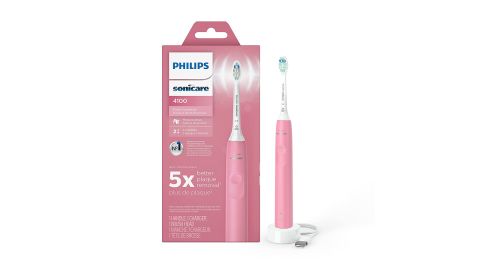
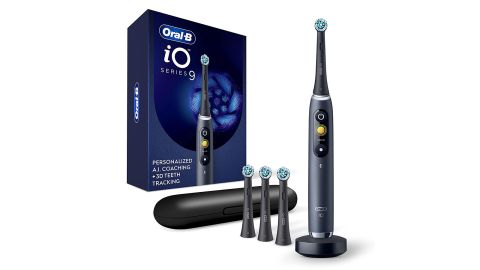
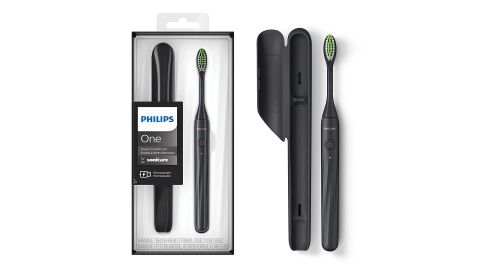
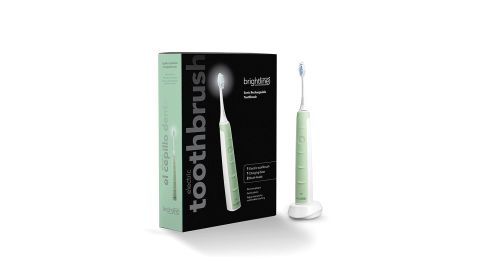














0 Response to "The best electric toothbrushes in 2022 - CNN Underscored"
Post a Comment